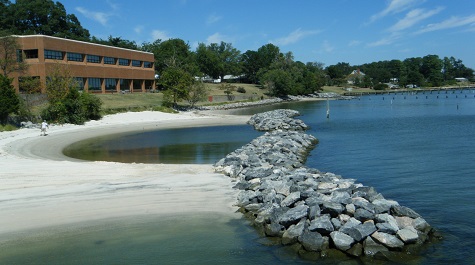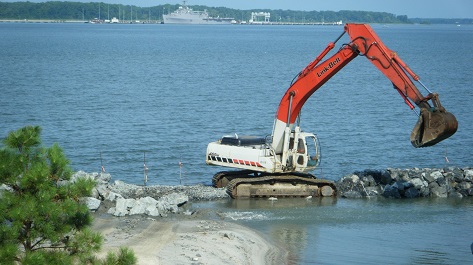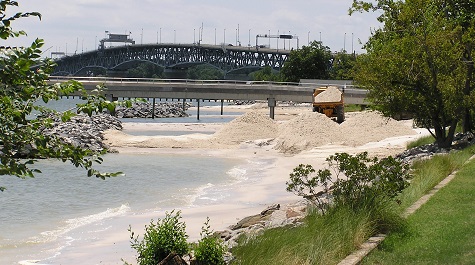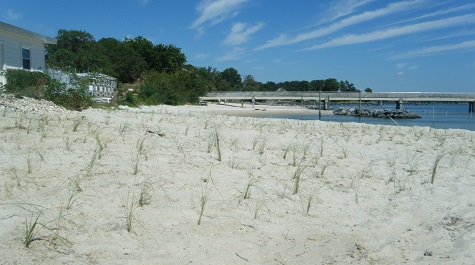Offshore Breakwaters & Beach Nourishment
A living shoreline approach for high-energy sand beach shorelines uses large, gapped stone structures strategically placed offshore. Offshore breakwater systems provide shoreline protection by intercepting incoming waves and creating stable pocket beaches between the fixed stone structures. The system includes beach nourishment and planting beach and dune vegetation. A wide sand beach provides an erosion buffer as well as valuable estuarine habitat for aquatic and terrestrial wildlife.
Suitable Sites
- Existing sand beaches at moderate to high energy locations
- Long beach shorelines where more than one breakwater unit can be installed
- Shallow nearshore water depths with hard sand bottom
- Absence of significant submerged aquatic vegetation (SAV) or shellfish habitat
Guidelines for Offshore Breakwater Systems
- Offshore breakwaters are used to create or enhance sand beaches, while marsh sills are usually placed closer to shore to create or enhance tidal marshes.
- Proper breakwater design requires advanced knowledge of coastal processes at the site, such as expected wave height, dominant wind directions, and sand movement.
- The ratio of maximum bay indentation to gap width is used to predict the future position of the beach shoreline between breakwaters.
- Potential breakwater project sites must be surveyed for submerged aquatic vegetation (SAV) habitat.
- The potential effects of breakwaters on adjacent shorelines must be carefully considered.
- Beach nourishment is an inherent component for any breakwater project. Allowing the breakwaters to accrete sand naturally steals sand from the longshore drift sand supply and may create or exacerbate erosion on downdrift properties.
- The placement of sand on certain high-energy beaches can impact habitat of protected species (e.g. sea turtles, Northeastern beach tiger beetle). Time of year restrictions or design modifications may be required for protected species.





